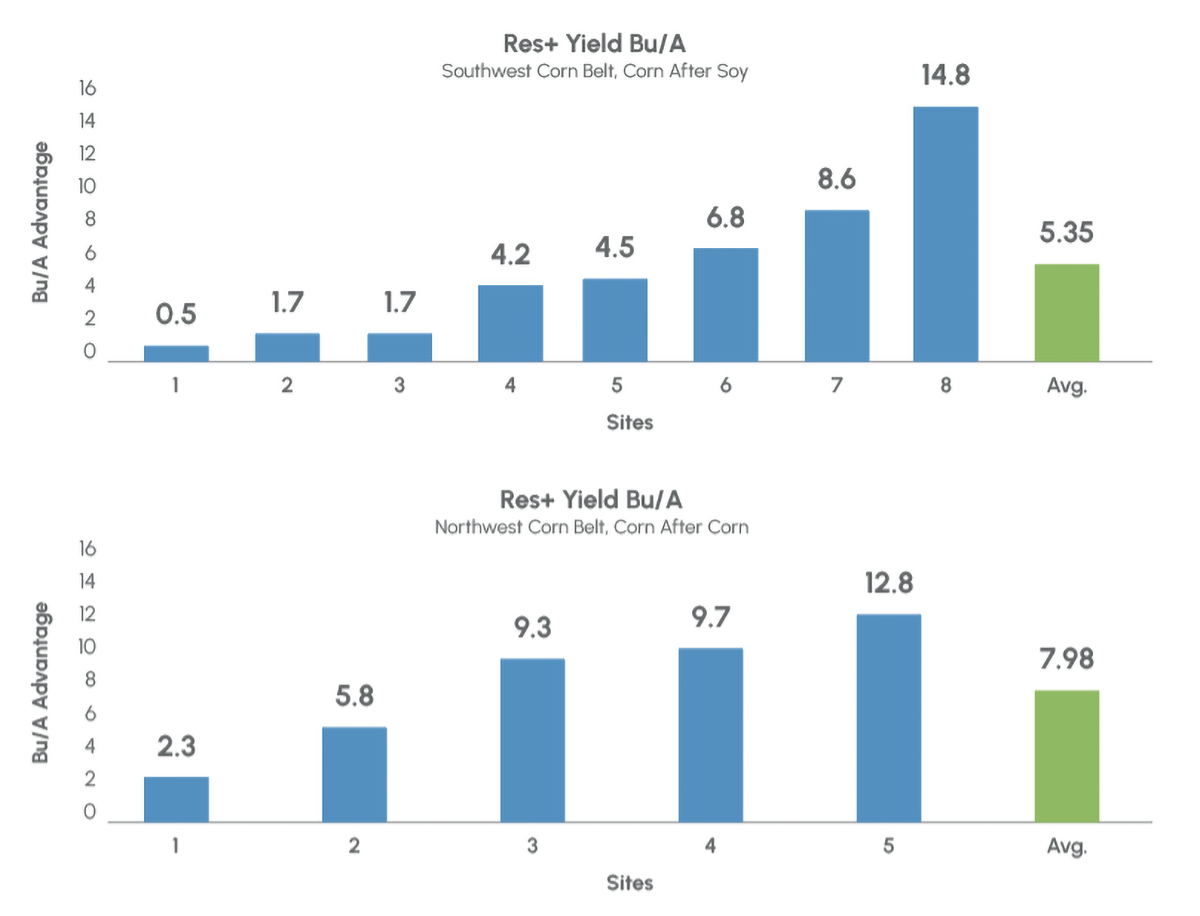
Elemental Enzymes’ Peptide-Based Biofungicide Earns Registration in Brazil

20+ countries, 50+ crops, generating more than 1,000 site-years of data
Sometimes, agricultural innovations lead to unexpected but highly beneficial secondary applications. Elemental Enzymes’s Res+™ nutrient catalyst is one such technology — originally developed for post-harvest field applications, it has since proven valuable as a pre-plant treatment that enhances nutrient availability and improves seedbed conditions.
How Res+ Works
Crop residue is a valuable organic resource, holding nutrients essential for future crops. However, excessive residue can create physical and biological barriers to planting efficiency, water infiltration, and nutrient cycling.
The key to unlocking these nutrients lies in breaking down cellulose — the complex carbohydrate that makes plant stubble tough and resistant to decomposition. Res+ contains cellulase, a highly specific enzyme that initiates targeted degradation of cellulose, creating micro-openings in the residue.
This process allows:
- Faster microbial access to accelerate natural decomposition
- Increased moisture retention to support beneficial soil microbes
- More efficient nutrient release for early root uptake
Unlike microbial-based residue treatments, which rely on uncertain microbial activity and environmental conditions, Res+ delivers a precisely calibrated amount of cellulase — ensuring consistent, measurable performance. Fields already contain native bacteria and fungi that contribute to decomposition; simply adding more microbes isn’t always the solution. Res+ enables these existing microbial populations to get to work faster by jumpstarting the breakdown process. Res+ also contains a humectant that attracts more moisture to the residue and holds it, to spur the growth and spread of stubble-degrading saprobes, which are organisms that contribute to organic decomposition.
Profitable new possibilities
Elemental researchers discovered that efficient residue breakdown not only clears debris but also releases stored nutrients — a process that, when timed correctly, can provide a distinct agronomic advantage
With further trials, Elemental and its grower-parters observed that applying Res+ 2-4 weeks ahead of planting row crops softened tough plant residue, reducing “skips” in seed placement, leading to more uniform crop emergence and more consistent stands.
Native microbes play a crucial role in seed germination and early crop development, but their efficiency depends on access to key micronutrients, which are often limited in availability. Res+ contains a package of micronutrients ideally suited for this, including magnesium, boron, copper, manganese, molybdenum, and zinc. These micronutrients are provided in chelated form, enhancing their stability in the soil and improving uptake by emerging crops — reducing the risk of runoff and ensuring more efficient nutrient use.
Part of the microbes’ job is to break carbon and nitrogen out of the old crop residue so new plant roots can pull them in. Post-harvest application of Res+ in the fall accomplishes the same residue breakdown and breakout of stored nutrients. The problem for spring planting is that the new crop will not be present to receive the nitrogen and other nutrients for several months.
A hard winter can also slow the breakdown of nutrients. Unlike live microbes, the enzymes in Res+ are not impacted by survivability concerns but may temporarily slow in extreme cold; however, once temperatures rise in late spring and summer, enzyme activity resumes, ensuring continuous nutrient cycling. When applied in spring, though, the enzymes work continuously through the season, helping microbes feed steady nitrogen, carbon, and more through the crop’s vegetative and reproductive stages. This has been shown in trials to increase crop quality and yield.
Growers looking to maximize both cost efficiency and agronomic benefits can apply Res+ in the spring, harnessing its full potential for residue breakdown, moisture retention, and nutrient release. Application timing is typically at least two weeks, but generally not more than one month, ahead of seeding. The product has been tested to work well in diverse and stressed environments.
Backed by independent research
The agronomic value of efficient residue breakdown isn’t just theoretical — it’s backed by years of research and grower experience. Third-party Beck’s Hybrids Practical Farm Research (PFR) trials over four years have recorded an average yield increase of +8.7 Bu/A with Res+. See the charts below for results from 2024 regional field trials.

These results highlight how targeted enzyme applications can unlock yield potential by improving nutrient availability and soil structure.
Widening its reach
Res+ is currently registered for use in the United States and Australia. If all goes well, Elemental expects approval in Brazil in early 2026 and Canada in 2027. The company is exploring broader global applications as well.
As precision agriculture evolves, so does our understanding of how to optimize soil biology. Res+ represents a next-generation approach to residue management — one that is predictable, scalable, and backed by science. By integrating enzyme technology into their crop nutrition strategy, growers can improve soil conditions, accelerate nutrient release, and set the stage for stronger yields.
As we move into the 2025 growing season, the question isn’t whether residue breakdown matters — it’s how we can make it faster, more effective, and more consistent.




